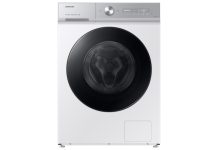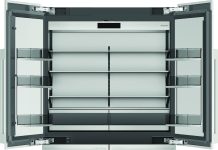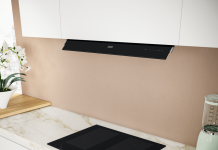Groupe Seb, operating in Italy with the brands Moulinex, Tefal, Rowenta and Krups, reverses the course and revolutionizes the principle that characterizes the Western marketing, betting on the reuse philosophy. A revolutionary experiment, based on 3D printing, that will create proselytes.
The business philosophy is fully expressed by the claim “Seb repairs!” that synthesizes at best the importance of the product durability according to Groupe Seb, leader in the production of small appliances, operating in Italy with Moulinex, Rowenta, Tefal and Krups brands and relying on a turnover of over 100 million Euros.
“The Group’s initial decision”, states Alain Pautrot, vice President Corporate After-Sales & Consumer Satisfaction, “stemmed from the will of saving in the guarantee period, reducing replacement costs drastically and, especially, avoiding changing non-defective products that are returned to customers after a simple maintenance, instead of having to bear the costs of a real replacement”. Not only. It springs also from the will of permitting a faster product change for future ranges, because defects are analysed better during the repair process of components, instead of replacing a product without checking its defects.
The main benefit monitored since 2015 – year when it was necessary to convince all the employees of the Group and, especially, the sales management – concerns the marketing universe, as well as environmental sustainability aimed at fighting wastes. A real trend inversion compared to the diktat of the manufacturing world that imposes to buy instead of repairing the product that does not work any longer: the reparability is granted for 10 years. Innovation has always been one of the distinguishing traits of the business policy, especially if parametrized to consumers’ real requirements. Complying with this course, over the last few years it has led the market with products that have become real “cases” in the manufacturing world. An example for all, Cuisine Companion that with its 60,000 pieces sold has freed the kitchen robot market from a niche where it had remained for years, extending it to an enlarged market, Now, two years later, it is released in its connected iCompanion version, to make the cooking experience increasingly technological and advanced. With immediate results. The Group operates in 150 Countries in the world, with a range of over 20 brands that include small appliances for cooking, home, ironing and body care, and with its long-term growth strategy able to match a global vision and a local approach.
In 2015, the Group achieved a turnover of 4,770 million Euros and profits amounting to 206 million Euros and the first 2016 semester shows +2.4% in sales. Today the Group is then ready to accept a new revolutionary challenge: “Repairing instead of throwing away”.
We are analysing in detail how this policy works. Each product implemented since 2011 is qualified in compliance with “reparability criteria “, according to 4 possible levels (fully repairable, mainly repairable, partially repairable, no available components) and only the first two levels can attain the “10Y repair” logo (repair for 10 years) for 97% of products, 67% completely repairable and 30% partially repairable. This qualification is validated for each product in R&D (research and development) phase, and the monthly KPI (Key Performance Indicator) of each factory is revised by the executive Commission of the group to grant the attainment of the target in each productive facility.
All implemented products must reach the status “fully or mainly repairable “, either through a more detailed access to components or through the modification of the product design to simplify dismounting and remounting operations, or making components cheaper or available for a longer time. This process is followed in each manufacturing site by R&D teams (not only by dedicated engineers but also by all professional figures who work at new products), in collaboration with the Central Service Organization in France.
All plants are considered; sometimes it is a simpler operation because some products involve simpler and cheaper repair. The Group’s feather in the cap is represented by the shifting to spare parts manufactured on the spot with 3D printers.
We ask Alain Pautrot why they have chosen this way. “To have repairable products for at least ten years since their purchase, we need to stock up parts several years before, especially when they are finished goods no longer in production. It is a burdensome operation and, especially, it is extremely difficult to foresee with accuracy and 10-15 years in advance what will be the required components and in what quantities. The new experience with the 3D printing in Seb will allow us to compose stocks of components for fewer years (5-7 instead of 10-15) with minor risks of calculation errors and parts will be printed on demand when the stock is finished. This will also allow extending the references”. A process that comes from far away and has implied an innovation-oriented process.
“We started with two types of 3 D printers for plastic (ABS), one follows the Fdm technology and the other the Sla one, and their combination has permitted us to print successfully most of our components, depending on the various needs connected with mechanical and aesthetical features.
The second step will occur when we have enough expertise (also with other printer types, including the metal parts that now we buy) and when the 3D printing process is integrated into the productive chain of the supply (order/printing/stock registration/stock testing/shipment): we will consider the possibility of printing no longer outside SEB but on “remotely controlled printers” owned by companies specialized in printing and meeting our needs” adds Alain Pautrot.
Waiting for knowing the customer satisfaction, which thanks to some protocol tests between consumers and repairs will be known at half of next year, Groupe Seb proceeds at fast pace towards an idea of revolutionary business strategy that matches innovation with reuse, an almost unknown concept in the contemporaneous manufacturing world where the password is perishability.
The Group is currently focusing on the printing of small parts (under 15x15x15 square centimetres) of mono-plastic, even if other components have already been studied. Until half 2017, they will print parts that are commonly ordered and that are part of stocks without necessarily printing them, because the target is to have quickly as many feedbacks as possible by consumers. The true challenge, however, will be the changes that the company will undergo due to these innovations.
“In September we officially presented the new 3D Project Team, with two goals: the first is promoting the 3D printing to repair products whose components might be no longer available following the conventional courses, and the second is using the 3D printing to implement products in 3-5 years, at least for the first quantities required.
This means that the product will be considered already in R&D phase, so that its repair can be executed by using 3D-printed elements (for instance, it is necessary to draw up files optimized in 3D already since the R&D phase)” adds Alain Pautrot.
The spontaneous question, however, concerns the consequences of this new approach. In other words, what reactions come from service centres since this innovation implies a reduction of their activity. Alain Pautrot answers as follows. “Service centres are enthusiastic with the possibility of repairing products using printed elements. Actually, at present we have involved only 40 of them, due to clear simplicity reasons, but all of them would like to be part of our testing protocol. Some of them are already proposing to use the 3D technology to print components that are no longer available, through the scanning of ruined components and their printing in the local “fab lab”. We congratulate with them for their so “consumer oriented” ideas, nevertheless we cannot officially acknowledge this process because the components are not always of tested quality”.
Good news also in the ambit of human resources, then, even if the 3D technology might lead to the dematerialization of production facilities if household appliances are manufactured in 3D and assembled in the sites closest to consumers, to reduce costs and problems connected with logistic. And then?
“We are considering also this aspect and probably we will achieve the first results within 2-3 years, concerning some components of some products, but more probably it will regard the moulds with short life, to have available samples faster” ends Alain Pautrot.







